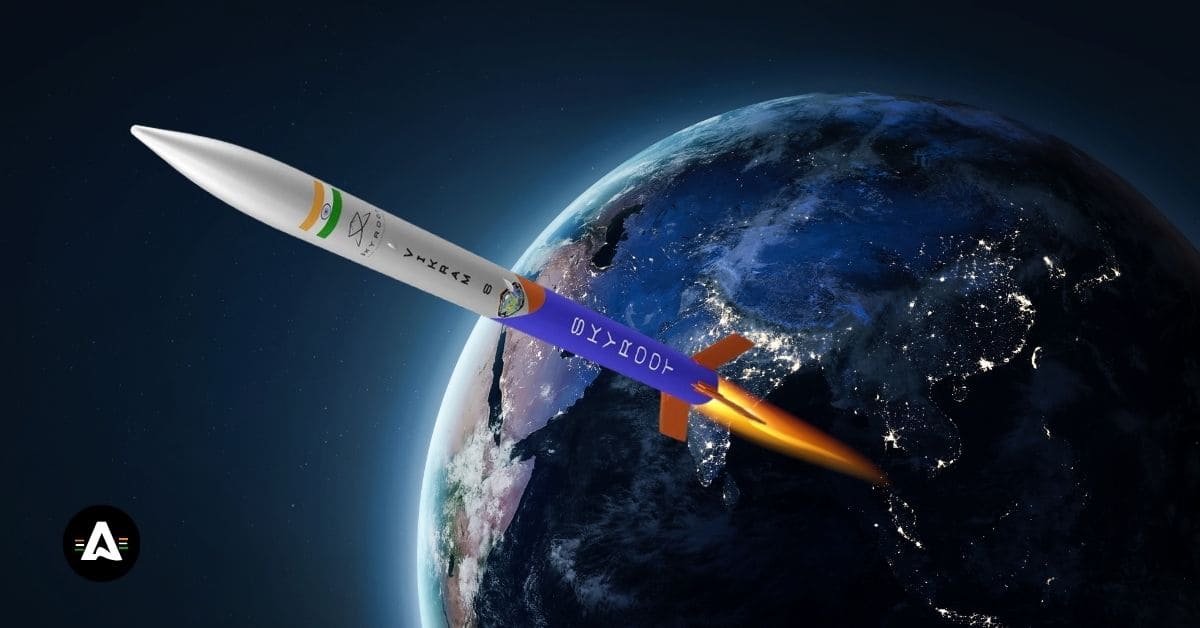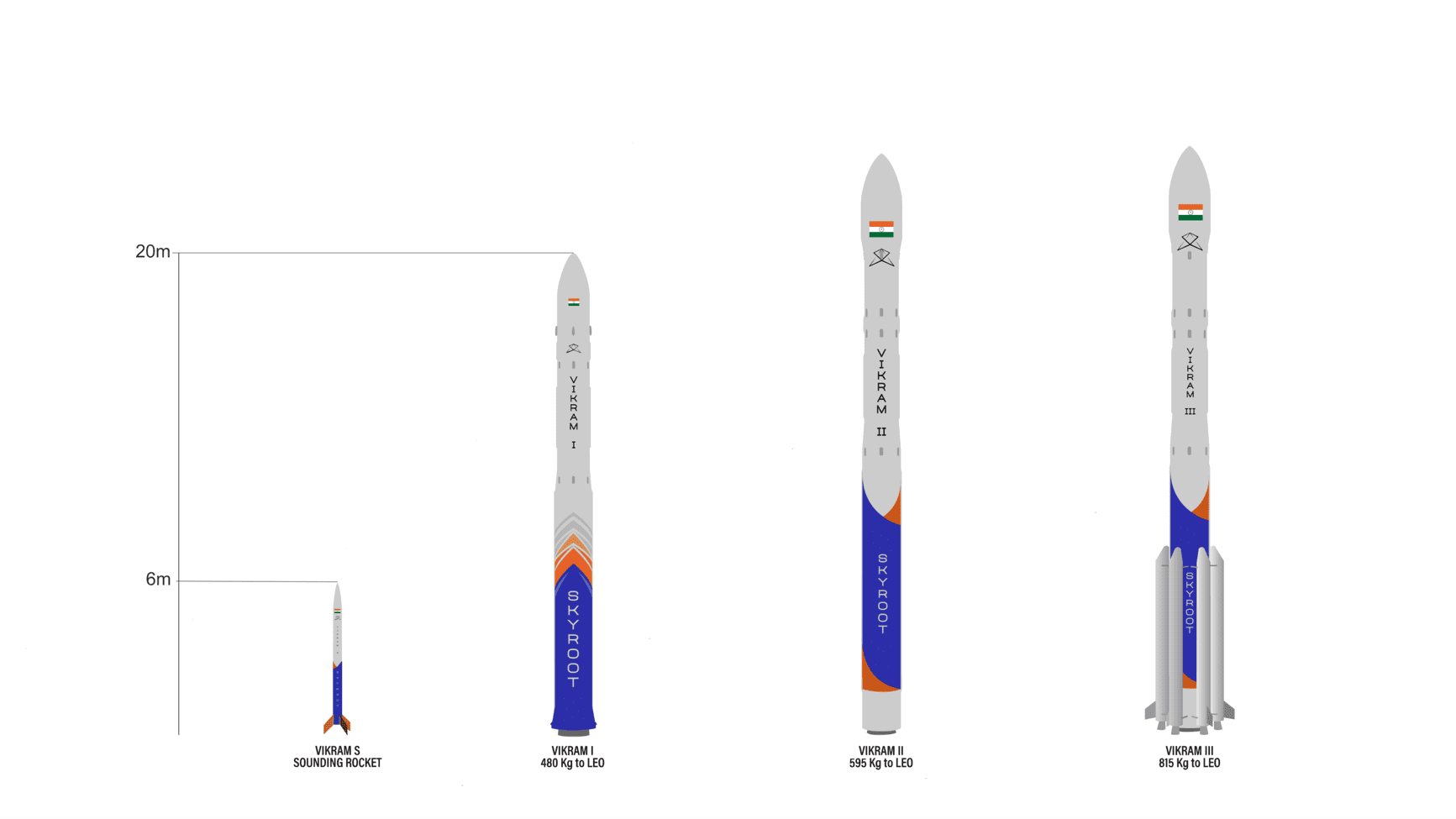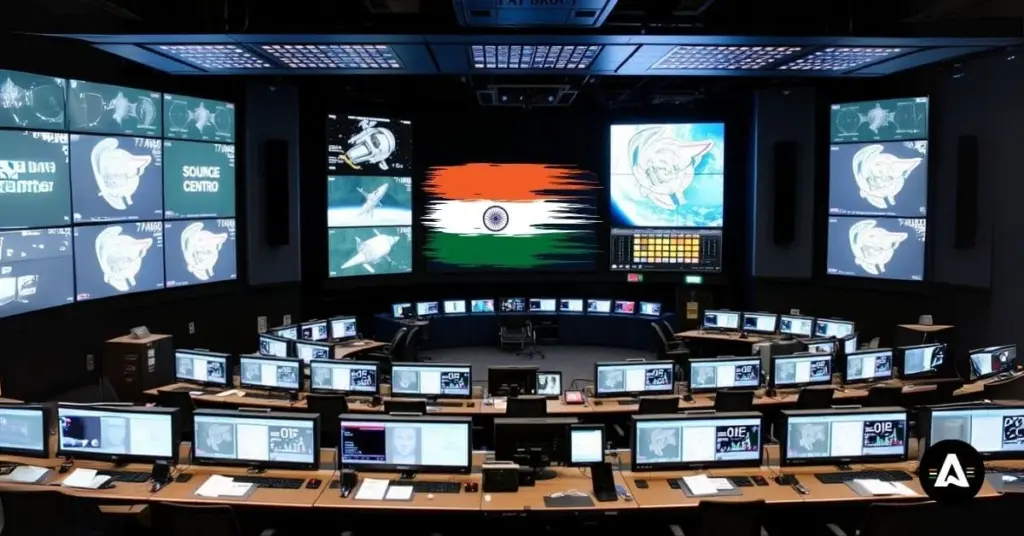Skyroot Aerospace: The Exciting Launch of Vikram-S

- Skyroot Aerospace is the first private Indian company to send a suborbital rocket, Vikram-S, into space. This is a major milestone for India’s space journey.
- The company builds launch vehicles that help people in the new small satellite market. These launch vehicles work well for satellite operators who need reliable service.
- They use new ideas like carbon fiber for rocket parts and cryogenic engines. This helps to lower both the making time and the cost.
- Skyroot was started by people who worked at the Indian Space Research Organisation. The goal is to get the private sector in India more involved in space projects.
- The Vikram Series rockets can do many things. They offer both sounding rockets and rockets for taking things to low Earth orbit, pushing forward new work in this area.
Skyroot Aerospace is an Indian company based in Hyderabad. It works in the private sector and puts its focus on space technology. The company began in 2018 and is now an important part of India’s space achievements. Skyroot has made many launch vehicles, like the Vikram series rockets. It is the first private Indian company to go to outer space with a suborbital rocket. Skyroot always looks for new ideas and cares about the environment. It also takes part in the small satellite market. The company is making it possible for other private players to join Indian space missions.
The Origin and Vision of Skyroot Aerospace
Skyroot Aerospace began in 2018. The company was started by two former ISRO engineers, Pawan Kumar Chandana and naga bharath daka. They got seed funding from big investors like Solar Industries and the indian angel network. At first, the company was a small startup. Over time, it became a leader in India’s private space race.
The aim of Skyroot is to give simple and good launch solutions for small satellites. Skyroot wants more people to get and use space technology. The team works with the department of space and satellite operators from all over the world. Skyroot hopes to change how people see and feel about private space work.
Founders and Their Backgrounds
The founders, Pawan Kumar Chandana and Naga Bharath Daka, worked as engineers at the Indian Space Research Organisation (ISRO). They had a strong vision for the project and wanted to bring in new ideas. Daka is a skilled engineer in this field. He also worked with the Department of Space before. This let him use what he knows to help with knowledge about satellites.
The team also had Vasudevan Gnanagandhi as a technical mentor. He brings many years of know-how about rocket engines. Chandana is a strong leader and the CEO. Daka is the COO and also helps guide the way the operations work.
They got their ideas from Vikram Sarabhai, who started the space program in India. With a strong drive to get things done, this team got help and money from the finance minister and some private groups. This support let them move ahead faster with their plans. With their work, they want the private sector to have a bigger part in space projects and research.
Mission to Revolutionize Private Space Launches in India
Skyroot Aerospace wants to make India a top spot for satellite operators looking for private options. They plan to do this by offering low-cost and efficient launch vehicles for small satellites. Skyroot is working with ISRO, the Defence Space Agency, and the Indian National Space Promotion and Authorization Center (IN-SPACe). By teaming up with these groups, Skyroot gets help, support, and important knowledge from the government. This helps them move forward and grow in the right way in this field.
By working together through agreements like the memorandum of understanding with Dhruva Space, Skyroot wants to make Earth observation better. The company also plans to improve space communication and help defense systems. They will use a hyperspectral imaging satellite constellation for these tasks, much like what Astrogate Labs has done. This shows that Skyroot is serious about moving technology forward and fixing important needs in the industry.
Skyroot has been growing fast and reaching big goals in this field. They work with Bellatrix Aerospace to come up with new ways to send satellites into space. By using modern propulsion technology, they can place satellites in space more exactly. Skyroot keeps working hard to make new things and wants India to be one of the top countries for private space launches. Their work shows how much they want to do better and move forward in the aerospace world.
Key Technologies Developed by Skyroot
Skyroot Aerospace makes rocket structures out of carbon fiber. These are both light and strong. The company uses this to build launch vehicles. By doing this, their rockets can carry more at one time.
The company has made big steps in rocket engine development. They have shown the world their Dhawan-1 cryogenic engine. The company also makes earth-storable liquid engines. These rocket engines are used in different types of Vikram Series rockets. All this work helps make several kinds of rockets. Because of this, satellite operators can get low-cost launch options much easier.
Skyroot puts in a lot of effort to work on new space technology. Their goal is to make space travel open and more affordable for everyone who wants to use it in the coming years.
Vikram Series Launch Vehicles

Skyroot’s Vikram Series is named after Vikram Sarabhai. This series has different rockets made for the small satellite market all over the world. These rockets give several options so people can choose what fits their needs best. Here is a look at the planned rockets.
Launch Vehicle | Payload Capacity to LEO (500 km) | Payload Capacity to SSPO (500 km) | Status |
|---|---|---|---|
Vikram-S (Suborbital) | – | – | Launched Successfully |
Vikram-I | 480 kg (1,060 lb) | 290 kg (640 lb) | Planned Q4 2025 |
Vikram-II | 595 kg (1,312 lb) | 400 kg (880 lb) | Under Development |
Vikram-III | 815 kg (1,797 lb) | 560 kg (1,230 lb) | Proposed |
These rockets use solid rocket stages. They can be changed in size and are used for different things, from sounding work to going into orbit. Vikram-S went up to 89.5 km in the air. This set the way for bigger systems that can go into orbit.
Advanced Rocket Propulsion Systems
Skyroot Aerospace makes upper-stage rocket engines. These engines are changing how propulsion technology works. Their cryogenic engine, Dhawan-1, runs on liquefied natural gas (LNG) and liquid oxygen. This helps the private sector by offering a good and cleaner choice. It gives people a way to use better fuel instead of older types.
The carbon ablative nozzles and the solid fuel systems, like Kalam-5 and Kalam-100, help the engine burn for a longer time. These also help it give high thrust. The engines come with thermal protection systems. These protect them and make sure they last well during launches.
Skyroot uses hypergolic-fuel systems inside light and strong carbon composite structures. This helps make building rockets much easier and quicker. With engines found in the Kalam series, Skyroot wants to be a leader in the private sector and help build new orbital vehicles like Vikram. Their designs make sure all of the parts work well as they move into a new stage of space travel.
The Journey to Launching Vikram-S
The launch of Vikram-S in November 2022 was an important time for the space sector in India. A private company launched a rocket for the first time here. There were many tests to check if the solid rocket stages worked well. After these tests, the rocket went up to 89.5 km high.
There was a lot of hard work happening out of sight. The teams had to check the rocket’s heat shields and be sure every part was safe. Skyroot made sure all things were ready. The rocket carried payloads for groups like Space Kidz and had no trouble. This big success showed how accurate the Vikram-S could be. It also helped start new ways for future trips to space, including Vikram-I and Vikram-II.
Development Milestones and Testing Phases
Skyroot Aerospace tested the Vikram series rockets and added some key new changes. The Kalam-100 on Vikram-I had a novel thermal protection system. This thermal protection system went through testing during its 108 seconds of burn time. It performed just like the design predictions said it would.
The static firing for the third stage motor looked at new ideas. This included using nozzles under the surface and a carbon composite case. They also used art technology to make it better. When they tested the Kalam-5, it made the right amount of thrust. It showed that the team could hit big goals while building solid rocket motors.
The team also did strong proof pressure tests for the Vikram engines. These tests showed that the engines can do well under high pressure when burning fuel. This gives great confidence in using their orbital transfer vehicle and the upper stage engine in the missions to come. These steps show both new technology and that Skyroot Aerospace is now a bigger name in the private space launch field.
Highlights of the Historic Vikram-S Mission
Skyroot’s Vikram-S launch was a big moment and got praise from people all over the world. Here are a few key things to know about the mission:
- Sounding rocket capability: This rocket is great to use when you want to try out new things and carry small, early-stage loads.
- The rocket went up to a high point of 89.5 km. This shows it can reach the height you need for low earth orbit missions.
- The mission started at the Satish Dhawan Space Centre. This is the main space centre in India.
- The rocket carried things for Space Kidz, Bazoomq, and N-Space Tech.
The Vikram-S mission showed that the rocket has peak vacuum thrust. It is strong enough for more steps in rocket missions. This was India’s first private rocket. It showed that the private sector can do great things to help the world go forward in space exploration.
Conclusion
Skyroot Aerospace is a big name in India’s space sector now. This company is the first Indian company to launch the Vikram-S rocket. They use new ideas and smart plans, which help them move fast in making rockets. One of their key achievements is their advanced upper stage rocket engine. This work has given the country new hope in space travel. The founders of this company have a lot of passion and work hard at what they do. You can see their focus on changing how to launch rockets in everything they make. As Skyroot Aerospace goes forward, they show that new companies can bring change to old industries. There is a good future here for both Skyroot and the space sector in India. If you want to join this journey, you can think about investing in or working with Skyroot Aerospace.
Frequently Asked Questions
Skyroot Aerospace was started by Naga Bharath Daka and Pawan Kumar Chandana. The two had both worked before as scientists at the Indian Space Research Organisation (ISRO). They have a lot of knowledge to bring from working in the private sector of space exploration. Naga Bharath Daka and his colleague helped set up the way for the first private rocket launches in India.
The Vikram-S rocket is important because it uses solid fuel for its power. It is also made with a strong and light carbon fiber structure. This helps the rocket work better when it goes up to space for short trips. The Vikram-S stands out as it is the first rocket made by a private company in India. This rocket shows what a good rocket engine can do.
Skyroot Aerospace was the first private company in India to send a suborbital rocket. They made this happen with their satellite launch vehicle, Vikram-I. This helped private players in the space sector take part in space technology. The move made India stronger in space technology. It also proved that private companies can have a big part in this field. Their work has helped both India and other private players who want to be in the space sector.
Yes, Skyroot Aerospace is working hard on the development of orbital vehicle Vikram-I. The team is in talks with satellite operators. They want to make deals for big launches. They plan to use the Vikram series rockets for future jobs. These jobs include moving things in space and sending heavy payloads. This will be a big step for them. Their goal is to get the most from their rockets for these tasks.
Skyroot Aerospace gets bigger with seed funding from the Indian Angel Network and other groups. People in the private sector can work with them or invest. You just need to reach out on their official platform. This is a good way to get into space technology and help make new things in space.




